Plastic injection molding is a versatile and widely used manufacturing process, with applications ranging from automotive parts to consumer products and medical devices. While it offers numerous advantages, such as high production efficiency and precision, it also comes with its share of challenges, especially when it comes to preventing costly mistakes. In this comprehensive guide, we will delve deep into the world of plastic injection molding and explore strategies, techniques, and best practices to avoid common pitfalls. By the end of this article, you will have a thorough understanding of how to prevent costly plastic injection molding mistakes and optimize your manufacturing processes.
View More Articles:

Understanding the Basics of Plastic Injection Molding
1.1. What is Plastic Injection Molding?
Plastic injection molding is a highly versatile and widely employed manufacturing process used to create a variety of plastic parts and products. It involves injecting molten plastic material into a mold cavity under high pressure. Once the plastic cools and solidifies within the mold, it is ejected, leaving behind a precise and often complex product or component.
Key Advantages of Plastic Injection Molding:
- High Precision: Injection molding allows for intricate and precise designs, making it suitable for products with intricate details.
- High Efficiency: It is a highly efficient process, capable of producing large quantities of parts in a relatively short time.
- Material Variety: A wide range of thermoplastic and thermosetting materials can be used in injection molding, offering flexibility in material selection.
- Minimal Post-Processing: Parts often require minimal post-processing, reducing production time and costs.
- Low Waste: The process generates less material waste compared to other manufacturing techniques.
1.2. Key Components of an Injection Molding Machine
An injection molding machine consists of several essential components that work together to execute the injection molding process:
1.2.1. Injection Unit:
- Hopper: This is where the raw plastic material is loaded into the machine.
- Screw or Plunger: The screw or plunger pushes the molten plastic material forward, creating pressure and injecting it into the mold.
1.2.2. Mold:
- Cavity: The mold cavity is the hollow space where the plastic is injected and takes the shape of the final product.
- Core: The core is the counterpart to the cavity, ensuring that the final product has the desired shape.
1.2.3. Clamping Unit:
- Clamp: The clamp holds the two halves of the mold together during the injection and cooling phases.
- Ejector: After cooling, the ejector pushes the solidified part out of the mold for removal.
1.2.4. Heating and Cooling:
- Heaters: These maintain the temperature of the plastic material in the barrel.
- Cooling System: A cooling system helps solidify the plastic part within the mold.
Control System:Controller: The machine’s controller manages the injection and cooling processes, ensuring precise control over variables like temperature, pressure, and cycle time.
Materials Used in Plastic Injection Molding
The choice of material in plastic injection molding depends on factors such as the desired properties of the final product, its application, and cost considerations. Commonly used materials include:
- Polyethylene (PE): Known for its flexibility and low cost, it’s used in a variety of applications, including packaging and consumer goods.
- Polypropylene (PP): Offers good chemical resistance and is commonly used for products like automotive parts and containers.
- Polystyrene (PS): Used for its excellent clarity and insulation properties in products like disposable cups and packaging.
- Polyvinyl Chloride (PVC): Known for its durability and resistance to chemicals, it’s used in pipes, cables, and medical products.
- Acrylonitrile-Butadiene-Styrene (ABS): Combines toughness and impact resistance, making it suitable for consumer electronics and automotive parts.
1.4. The Injection Molding Process Overview
The plastic injection molding process consists of several distinct phases:
- Clamping:The mold is closed and held together by the clamping unit, ensuring that the mold cavity and core are properly aligned.
- Injection:Plastic material is heated and injected into the mold cavity under high pressure.
- Cooling:The plastic inside the mold cools and solidifies, taking the shape of the cavity.
- Ejection:Once the plastic has sufficiently cooled, the ejector system pushes the part out of the mold.
- Part Removal:The part is removed from the machine, and the mold closes, preparing for the next cycle.
Understanding these fundamental aspects of plastic injection molding sets the stage for successfully preventing costly mistakes in the process. In the following sections of this comprehensive guide, we will delve deeper into specific strategies and techniques to optimize your injection molding operations and minimize the risk of errors.
Identifying Common Injection Molding Mistakes
Plastic injection molding, while highly efficient and versatile, can sometimes lead to various defects and mistakes that can be costly to rectify. Recognizing these common injection molding mistakes is essential for preventing production delays and minimizing material wastage. Let’s explore each of these issues in detail.
2.1. Short Shots
Short shots occur when the molten plastic does not completely fill the mold cavity, leaving voids or incomplete parts. Several factors can contribute to short shots:
- Insufficient Injection Pressure: Inadequate pressure may not force the plastic material to flow into all areas of the mold.
- Inadequate Melt Temperature: The plastic material may not be fully melted, making it less fluid and more prone to incomplete filling.
- Improper Mold Design: Poor mold design, including thin walls or complex geometries, can make it difficult for plastic to flow evenly.
2.2. Flash
Flash is the excess material that escapes from the mold cavity and forms a thin, unwanted layer around the final part. It can occur due to:
- Excessive Injection Pressure: High pressure can force plastic material to seep through small gaps in the mold.
- Worn or Damaged Mold: Damage or wear on the mold’s sealing surfaces can allow plastic to escape.
- Inadequate Clamping Force: If the mold is not properly closed, flash can occur as the plastic material escapes under pressure.
2.3. Sink Marks
Sink marks are depressions or dimples on the surface of a molded part, typically caused by variations in cooling rates. Common causes include:
- Uneven Cooling: Different thicknesses in the part can result in uneven cooling and subsequent sink marks.
- Inadequate Packing Pressure: If the packing pressure is insufficient, the plastic may not fully fill the mold, leading to sink marks upon cooling.
- Inadequate Cooling Time: Premature ejection of the part before it cools adequately can also lead to sink marks.
2.4. Warping
Warping is the deformation or twisting of a part after it has been ejected from the mold. Factors contributing to warping include:
- Non-Uniform Cooling: Variations in cooling rates across the part can cause differential shrinkage and warping.
- Residual Stress: Internal stresses within the material can be released during cooling, leading to warping.
- Inadequate Cooling Time: Removing the part from the mold before it has sufficiently cooled can result in warping.
2.5. Burn Marks
Burn marks are unsightly discolorations or scorching on the surface of a part, often caused by excessive heat or trapped air. Common causes include:
- Overheating: Excessive melt temperature or prolonged residence time in the barrel can lead to burn marks.
- Air Trapping: Air bubbles or voids in the mold cavity can cause localized overheating.
- Poor Venting: Inadequate venting of air or gases can result in burn marks due to pressure build-up.
2.6. Voids and Bubbles
Voids and bubbles are undesirable gaps or air pockets within a molded part. Causes include:
- Poor Mold Venting: Inadequate venting of air during injection can trap air within the mold, leading to voids.
- Moisture Content: Moisture in the plastic material can vaporize during injection, causing bubbles.
- Insufficient Injection Pressure: Low pressure may not fully pack the mold, resulting in voids.
2.7. Overpacking and Underpacking
Overpacking occurs when excessive pressure is applied to the mold, which can distort the part or damage the mold itself. Conversely, underpacking results from insufficient pressure, leading to incomplete filling or structural weaknesses. Balancing the packing pressure is crucial to avoid these issues.
2.8. Ejector Pin Marks
Ejector pin marks are depressions or blemishes on the part’s surface caused by the ejection pins used to remove the part from the mold. Proper placement and design of ejector pins, as well as controlling their ejection force, can prevent these marks.
2.9. Parting Line Defects
Parting line defects are imperfections that occur along the seam where the two halves of the mold meet. They can include flash, rough edges, or mismatches in parting line alignment. Proper mold design, maintenance, and clamping force are essential to prevent parting line defects.
Understanding these common injection molding mistakes is the first step in preventing them. In the following sections of this comprehensive guide, we will delve into strategies and best practices to mitigate these issues, ensuring a smoother and more cost-effective injection molding process.
Pre-Production Planning
Effective pre-production planning is essential for successful plastic injection molding. This phase sets the foundation for a smooth manufacturing process and helps prevent costly mistakes. Let’s explore the key aspects of pre-production planning.
3.1. Design Considerations
Design considerations play a pivotal role in injection molding. Here are some factors to keep in mind:
3.1.1. Part Geometry:
- Simplicity: Simplify part geometry whenever possible to reduce complexity and production costs.
- Uniform Wall Thickness: Maintain consistent wall thickness to promote even cooling and minimize warping.
3.1.2. Draft Angles:
- Draft angles: Incorporate draft angles on vertical surfaces to facilitate easy part ejection from the mold.
3.1.3. Ribs and Fillets:
- Ribs: Use ribs to strengthen and stiffen parts without increasing thickness.
- Fillets: Incorporate fillets at corners to reduce stress concentrations.
3.1.4. Undercuts:
- Minimize Undercuts: Limit undercuts that can complicate ejection and increase production costs.
3.1.5. Tolerances:
- Tolerances: Define realistic tolerances for critical dimensions, considering the material and process capabilities.
3.1.6. Gate Placement:
- Gate Placement: Strategically position gates to minimize cosmetic defects and facilitate proper material flow.
3.2. Material Selection
Material selection is crucial for achieving the desired part characteristics and preventing issues during molding:
3.2.1. Material Properties:
- Mechanical Properties: Consider the required strength, stiffness, and impact resistance.
- Thermal Properties: Account for temperature resistance and heat stability.
- Chemical Resistance: Assess the material’s resistance to chemicals it may encounter in its application.
3.2.2. Material Cost:
- Cost Analysis: Balance material performance with cost-effectiveness.
3.2.3. Recyclability and Sustainability:
- Eco-Friendly Materials: Consider using recyclable or biodegradable materials for sustainability.
3.3. Mold Design and Construction
Mold design and construction directly impact the quality and efficiency of the injection molding process:
3.3.1. Proper Venting:
- Venting: Ensure adequate venting to allow air and gases to escape, preventing burn marks and voids.
3.3.2. Gate Design:
- Gate Type and Size: Select the appropriate gate type (e.g., edge gate, pin gate) and size to control material flow.
3.3.3. Cooling System:
- Efficient Cooling: Design an efficient cooling system to achieve uniform cooling and reduce cycle times.
3.3.4. Mold Material:
- Mold Material Selection: Choose a mold material (e.g., steel, aluminum) based on production volume and material properties.
3.4. Prototype Testing
Prototype testing allows you to identify and address potential issues before full-scale production:
3.4.1. Prototyping Methods:
- 3D Printing: Rapid prototyping with 3D printing helps validate part design.
- Mold Prototypes: Create test molds to assess mold functionality and part quality.
3.4.2. Testing Parameters:
- Material Testing: Evaluate the chosen material’s behavior under injection molding conditions.
- Process Validation: Confirm that the injection molding process parameters are optimal for the part design.
3.5. Setting Realistic Expectations
Setting realistic expectations is crucial to avoid disappointments and delays:
3.5.1. Production Timeline:
- Lead Times: Understand the lead times for mold fabrication and material procurement.
- Tolerance for Delays: Prepare for potential delays due to unforeseen challenges.
3.5.2. Cost Estimates:
- Budget Allocation: Set a realistic budget that considers material costs, mold expenses, and production expenses.
3.5.3. Quality Standards:
- Quality Criteria: Define clear quality standards and criteria for acceptance.
3.5.4. Continuous Improvement:
- Continuous Improvement: Embrace a culture of continuous improvement to refine processes and enhance product quality over time.
Proper pre-production planning is a fundamental step toward preventing costly plastic injection molding mistakes. By carefully considering design, material, mold, testing, and expectations, you can streamline your manufacturing process and increase the likelihood of a successful and efficient production run.
Optimal Machine Setup
Achieving an optimal machine setup is critical for the success of plastic injection molding. Properly configuring the injection molding machine ensures the production of high-quality parts while minimizing costly mistakes. Let’s delve into the key aspects of machine setup.
4.1. Temperature Control
Temperature control is vital for maintaining the consistency of the injection molding process:
4.1.1. Barrel Temperature:
- Zone Control: Injection molding machines have multiple heating zones along the barrel. Ensure each zone is set to the appropriate temperature to melt and homogenize the plastic material.
4.1.2. Nozzle Temperature:
- Nozzle Temperature: Set the nozzle temperature to match the desired melt temperature for the material, ensuring smooth flow into the mold.
4.1.3. Mold Temperature:
- Mold Temperature: Control the temperature of the mold using cooling channels to achieve consistent part quality. Adjust mold temperature based on the material being used.
4.2. Pressure Regulation
Pressure regulation is crucial to maintain control over the injection process:
4.2.1. Injection Pressure:
- Injection Pressure: Adjust the injection pressure to ensure that the plastic material is properly packed into the mold cavity without overpacking or underpacking.
4.2.2. Holding Pressure:
- Holding Pressure: Set the holding pressure to prevent material from flowing back into the barrel after injection and to counteract shrinkage as the part cools.
4.2.3. Back Pressure:
- Back Pressure: Apply back pressure to the screw to homogenize the melt and reduce the chance of air entrapment.
4.3. Injection Speed and Pressure
Injection speed and pressure directly influence the quality of the molded parts:
4.3.1. Injection Speed:
- Injection Speed: Adjust the injection speed to control the rate at which the material is injected into the mold. High speeds can cause turbulence and result in defects.
4.3.2. Injection Pressure Profile:
- Pressure Profile: Implement a suitable pressure profile to ensure that the material flows smoothly without causing defects such as short shots or burn marks.
4.4. Cooling and Cycle Time
Cooling and cycle time management are essential for part quality and production efficiency:
4.4.1. Cooling Time:
- Cooling Time: Ensure that the part remains in the mold for the appropriate duration to allow it to cool and solidify properly. Premature ejection can lead to warping.
4.4.2. Cooling System Efficiency:
- Cooling System: Maintain an efficient cooling system within the mold to achieve uniform cooling across the part.
4.4.3. Cycle Time Optimization:
- Cycle Time: Strive to optimize cycle times while maintaining part quality. Reducing cycle times can increase production efficiency and reduce costs.
4.5. Maintenance and Calibration
Regular maintenance and calibration of the injection molding machine are essential to prevent costly mistakes and ensure consistent performance:
4.5.1. Preventive Maintenance:
- Routine Checks: Perform routine maintenance checks on machine components such as the screw, barrel, and clamping unit to identify and address wear or damage.
4.5.2. Calibration:
- Calibration: Calibrate temperature, pressure, and other machine settings regularly to ensure accuracy and consistency.
4.5.3. Cleaning:
- Cleaning: Keep the machine and mold clean to prevent contamination and defects.
4.5.4. Documentation:
- Documentation: Maintain detailed records of machine settings, maintenance activities, and calibration to facilitate troubleshooting and process optimization.
Achieving an optimal machine setup requires meticulous attention to detail and a commitment to continuous improvement. By fine-tuning temperature control, pressure regulation, injection speed and pressure, cooling, and maintenance practices, you can enhance the efficiency and reliability of your plastic injection molding operations while minimizing costly mistakes.
Quality Control Measures
Ensuring consistent quality in plastic injection molding is paramount for preventing costly mistakes and maintaining customer satisfaction. Quality control measures play a crucial role in achieving this goal. Let’s explore these measures in detail.
5.1. Statistical Process Control (SPC)
Statistical Process Control (SPC) is a systematic approach to monitor and control the injection molding process. It involves the collection and analysis of data to detect variations and deviations from established quality standards:
5.1.1. Data Collection:
- Key Metrics: Collect data on critical process parameters such as temperature, pressure, cycle time, and part dimensions.
- Sampling: Determine the frequency and locations for data collection, ensuring it represents the entire production run.
5.1.2. Data Analysis:
- Control Charts: Create control charts to monitor variations and trends in process data.
- Statistical Analysis: Employ statistical tools like histograms, Pareto charts, and process capability indices to assess process performance.
5.1.3. Process Adjustment:
- Real-time Control: Use SPC data to make real-time adjustments to machine settings and processes when variations are detected.
5.2. In-Process Monitoring
In-process monitoring involves continuous observation of the injection molding process to identify issues as they arise:
5.2.1. Sensors and Alarms:
- Sensors: Install sensors to monitor key parameters like temperature, pressure, and cycle time.
- Alarms: Set up alarms or notifications to alert operators to any out-of-spec conditions.
5.2.2. Visual Inspection:
- Visual Inspection: Train operators to visually inspect parts during production, looking for defects like flash, short shots, or surface imperfections.
5.2.3. Real-time Feedback:
- Feedback Loop: Establish a feedback loop where operators can report anomalies or irregularities for immediate attention.
5.3. Inspection and Testing
Inspection and testing are crucial for verifying the quality of molded parts:
5.3.1. Sampling Plans:
- Sampling Plans: Develop well-defined sampling plans for inspecting parts, specifying the number of samples and acceptance criteria.
5.3.2. Non-Destructive Testing:
- Non-Destructive Testing (NDT): Implement NDT methods such as X-ray or ultrasonic testing to assess internal part quality.
5.3.3. Dimensional Inspection:
- Dimensional Inspection: Use precision measurement tools like calipers or coordinate measuring machines (CMMs) to verify critical part dimensions.
5.3.4. Functional Testing:
- Functional Testing: Perform functional tests on parts to ensure they meet performance requirements.
5.4. Documentation and Traceability
Documentation and traceability are essential for accountability and continuous improvement:
5.4.1. Record Keeping:
- Record Keeping: Maintain detailed records of process parameters, inspection results, and any deviations from quality standards.
5.4.2. Part Traceability:
- Part Traceability: Implement a system for tracking each molded part to its specific production batch or mold.
5.4.3. Material Traceability:
- Material Traceability: Ensure that the origin and properties of the plastic materials used are traceable.
5.5. Root Cause Analysis
Root cause analysis is a systematic approach to identify and address the underlying causes of defects or quality issues:
5.5.1. Problem Solving Teams:
- Multidisciplinary Teams: Form teams with members from different departments to investigate and address quality issues effectively.
5.5.2. Data Analysis:
- Data Review: Analyze historical data and SPC data to identify patterns and potential root causes.
5.5.3. Investigative Tools:
- Tools: Use tools like the 5 Whys, fishbone diagrams (Ishikawa), or Failure Mode and Effects Analysis (FMEA) to dig deeper into the causes of defects.
5.5.4. Corrective Actions:
- Action Plans: Develop corrective action plans to eliminate or mitigate identified root causes.
By implementing these quality control measures, you can proactively identify and address issues, maintain high-quality standards, and prevent costly mistakes in your plastic injection molding processes. Continuous monitoring, documentation, and root cause analysis contribute to ongoing process improvement and customer satisfaction.
Operator Training and Skill Development
Operator training and skill development are integral components of a successful plastic injection molding operation. Well-trained operators not only contribute to increased efficiency but also play a pivotal role in preventing costly mistakes. Let’s explore the various aspects of operator training and skill development.
6.1. Importance of Operator Training
6.1.1. Precision and Consistency:
- Consistency: Well-trained operators can consistently produce high-quality parts, reducing variability in production.
6.1.2. Reduced Downtime:
- Efficiency: Skilled operators can identify and address issues promptly, minimizing production downtime.
6.1.3. Cost Reduction:
- Waste Reduction: Trained operators are less likely to produce defective parts, leading to material and cost savings.
6.2. Safety Protocols
6.2.1. Safety Awareness:
- Safety Training: Ensure operators are well-versed in safety protocols, including the safe operation of machinery and handling of materials.
6.2.2. Hazard Mitigation:
- Hazard Identification: Train operators to identify potential safety hazards within the workplace and how to mitigate them.
6.2.3. Emergency Response:
- Emergency Procedures: Provide training on emergency response procedures, including equipment shutdown and evacuation plans.
6.3. Troubleshooting Skills
6.3.1. Problem Identification:
- Defect Recognition: Equip operators with the ability to recognize common defects and their potential causes.
6.3.2. Root Cause Analysis:
- Analytical Skills: Train operators in root cause analysis techniques to identify and address underlying issues.
6.3.3. Quick Response:
- Immediate Action: Encourage operators to take immediate corrective action when issues arise to prevent further defects.
6.4. Continuous Improvement
6.4.1. Kaizen Philosophy:
- Kaizen: Instill the philosophy of continuous improvement among operators, encouraging them to identify areas for enhancement.
6.4.2. Process Feedback:
- Operator Input: Foster an environment where operators can provide feedback on process improvements or ideas for efficiency gains.
6.4.3. Training Updates:
- Ongoing Learning: Continuously update operator training to incorporate new techniques, technologies, and best practices.
6.4.4. Skill Diversification:
- Cross-Training: Consider cross-training operators in various aspects of the injection molding process to increase flexibility and adaptability.
Effective operator training and skill development are investments in both the short and long term. Skilled operators contribute to the overall success of the operation by ensuring safety, quality, and efficiency. Continuous training and a commitment to improvement empower operators to adapt to evolving challenges and technologies, ultimately preventing costly mistakes and enhancing the competitiveness of your plastic injection molding operation.
Troubleshooting and Problem-Solving
Troubleshooting and problem-solving are essential skills in plastic injection molding. When issues arise, the ability to identify and address them promptly is crucial for preventing costly mistakes and maintaining efficient production. Let’s delve into the various aspects of troubleshooting and problem-solving in this context.
7.1. Common Injection Molding Problems and Solutions
7.1.1. Short Shots:
- Problem: Incomplete filling of the mold cavity.
- Solution: Adjust injection speed, pressure, or temperature. Ensure adequate venting and proper mold design.
7.1.2. Flash:
- Problem: Excess material escapes from the mold, creating thin, unwanted layers.
- Solution: Reduce injection pressure, increase clamp force, or inspect and maintain the mold for damage or wear.
7.1.3. Sink Marks:
- Problem: Depressions or dimples on the part surface.
- Solution: Optimize cooling time, uniform wall thickness, and gate placement.
7.1.4. Warping:
- Problem: Part deformation or twisting after ejection.
- Solution: Improve cooling and ejection timing, ensure uniform wall thickness, and reduce residual stresses.
7.1.5. Burn Marks:
- Problem: Unsightly discolorations or scorching on the part surface.
- Solution: Lower melt temperature, increase venting, and minimize residence time in the barrel.
7.1.6. Voids and Bubbles:
- Problem: Gaps or air pockets within the part.
- Solution: Enhance venting, ensure proper injection pressure, and address moisture content in the material.
7.1.7. Overpacking and Underpacking:
- Problem: Excessive or insufficient packing of the mold cavity.
- Solution: Adjust packing pressure, time, and temperature to achieve the desired level of material packing.
7.1.8. Ejector Pin Marks:
- Problem: Depressions or blemishes on the part surface caused by ejector pins.
- Solution: Redesign ejector pin locations or adjust ejection force and timing.
7.1.9. Parting Line Defects:
- Problem: Imperfections at the seam where mold halves meet.
- Solution: Improve mold alignment, maintain mold surfaces, and optimize clamping force.
7.2. Advanced Troubleshooting Techniques
7.2.1. Scientific Molding:
- Scientific Approach: Implement scientific molding principles to gain a deeper understanding of process variables and optimize settings.
7.2.2. Mold Flow Analysis:
- Simulation: Utilize mold flow analysis software to simulate and identify potential issues before actual production.
7.2.3. Process Monitoring Systems:
- Advanced Systems: Invest in real-time process monitoring systems that provide data and alerts for rapid intervention.
7.3. Collaboration with Suppliers and Experts
7.3.1. Material Suppliers:
- Material Expertise: Collaborate closely with material suppliers to understand material behavior, specifications, and potential improvements.
7.3.2. Tooling Experts:
- Mold Experts: Engage with mold manufacturers and experts for mold design optimization and troubleshooting.
7.3.3. Process Engineers:
- Expert Consultation: Seek advice from process engineers or consultants with specialized knowledge in plastic injection molding.
7.3.4. Industry Networking:
- Networking: Join industry associations and forums to connect with peers and share knowledge and experiences.
Effective troubleshooting and problem-solving require a combination of experience, knowledge, and a systematic approach. By addressing common problems, employing advanced techniques, and collaborating with suppliers and experts, you can enhance the efficiency and reliability of your plastic injection molding operations while minimizing costly mistakes.
Sustainability and Environmental Considerations
In today’s world, sustainability and environmental responsibility are paramount in every industry, including plastic injection molding. To prevent costly mistakes and meet the growing demand for eco-conscious manufacturing, it’s crucial to integrate sustainable practices into your injection molding processes. Here are key aspects to consider:
8.1. Eco-Friendly Materials
8.1.1. Material Selection:
- Biodegradable and Recyclable Materials: Opt for materials that are biodegradable or easily recyclable to reduce environmental impact.
8.1.2. Post-Consumer Recycled (PCR) Content:
- PCR Content: Incorporate post-consumer recycled content into your plastic materials to reduce the consumption of virgin resources.
8.1.3. Material Efficiency:
- Reducing Material Waste: Implement strategies to minimize material waste during production, such as regrinding or reusing scrap materials.
8.2. Energy Efficiency
8.2.1. Efficient Machinery:
- Energy-Efficient Machines: Invest in energy-efficient injection molding machines to reduce energy consumption.
8.2.2. Process Optimization:
- Optimized Parameters: Continuously optimize process parameters to reduce cycle times and energy usage.
8.2.3. Heating and Cooling:
- Energy-Efficient Heating and Cooling: Ensure that heating and cooling systems are energy-efficient and well-maintained.
8.3. Waste Reduction and Recycling
8.3.1. Scrap Reduction:
- Minimizing Scrap: Implement lean manufacturing practices to reduce scrap production.
8.3.2. Recycling Programs:
- Internal Recycling: Set up recycling programs within your facility to handle plastic waste efficiently.
8.3.3. Closed-Loop Systems:
- Closed-Loop Systems: Consider closed-loop systems that recycle excess material directly back into the production process.
8.3.4. Collaboration:
- Collaborate with Suppliers: Work with material suppliers who have take-back programs for recycling materials.
8.3.5. Regulatory Compliance:
- Environmental Compliance: Stay up-to-date with environmental regulations and ensure your facility complies with them.
8.3.6. Life Cycle Assessment:
- Life Cycle Analysis: Conduct a life cycle assessment of your products to understand their environmental impact from production to disposal.
Embracing sustainability and environmental considerations in plastic injection molding not only aligns with responsible business practices but can also lead to cost savings and reduced waste. By choosing eco-friendly materials, optimizing energy usage, and minimizing waste, you can contribute to a greener future while preventing costly mistakes associated with environmental non-compliance or inefficient resource utilization.
Case Studies and Success Stories
Learning from real-world examples and success stories can provide valuable insights into how companies have avoided costly mistakes and improved their injection molding processes. Let’s explore a few cases that highlight effective strategies and outcomes.
-

5 Axis CNC Machining Spiral Bevel Gear Mold
-
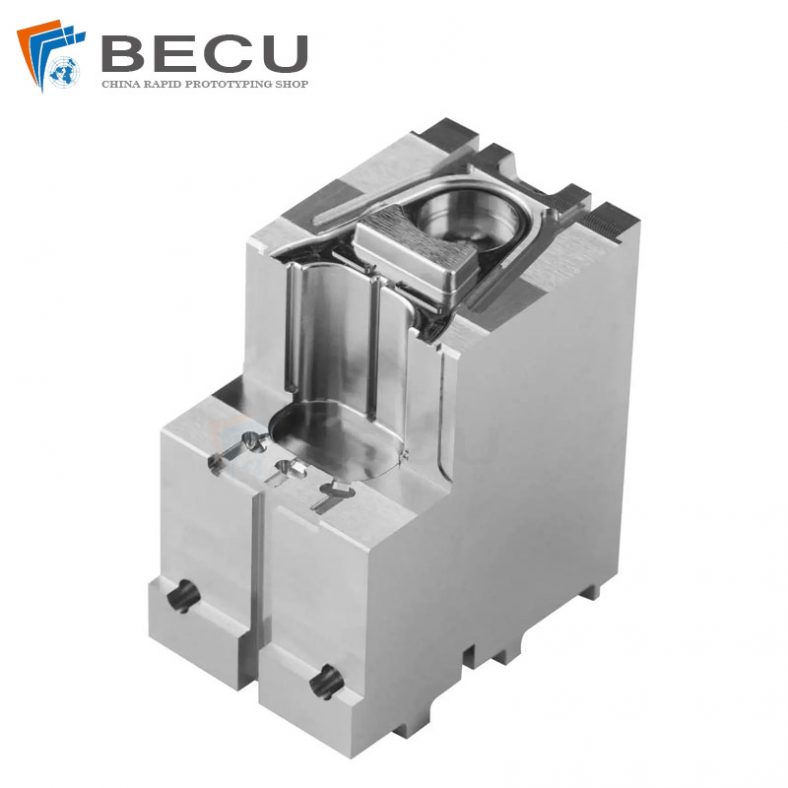
Small Precision Injection Molding Inserts
-
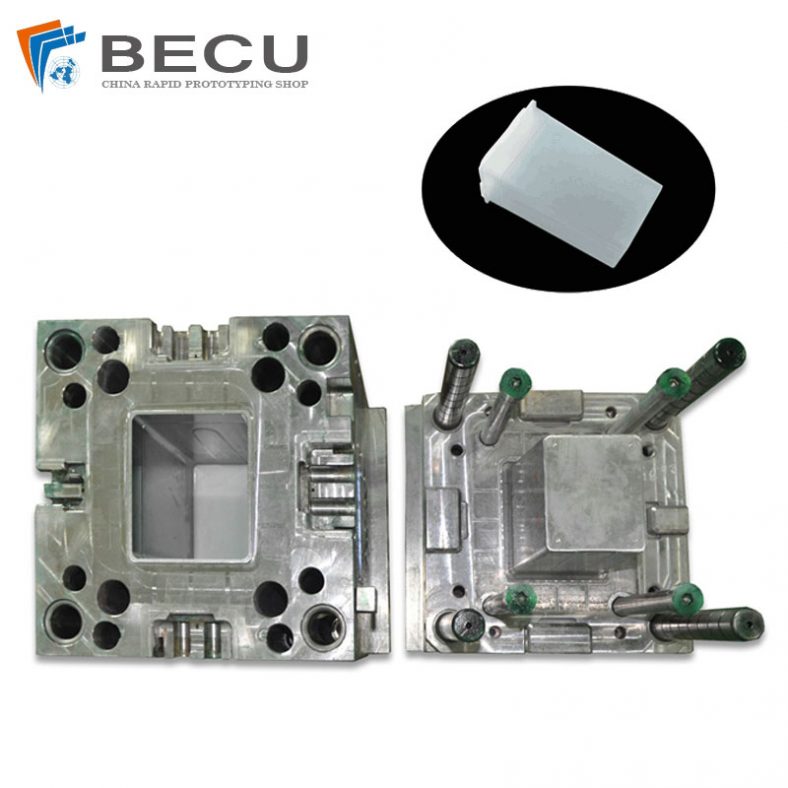
Plastic Storage Box Plastic Injection Mold
-
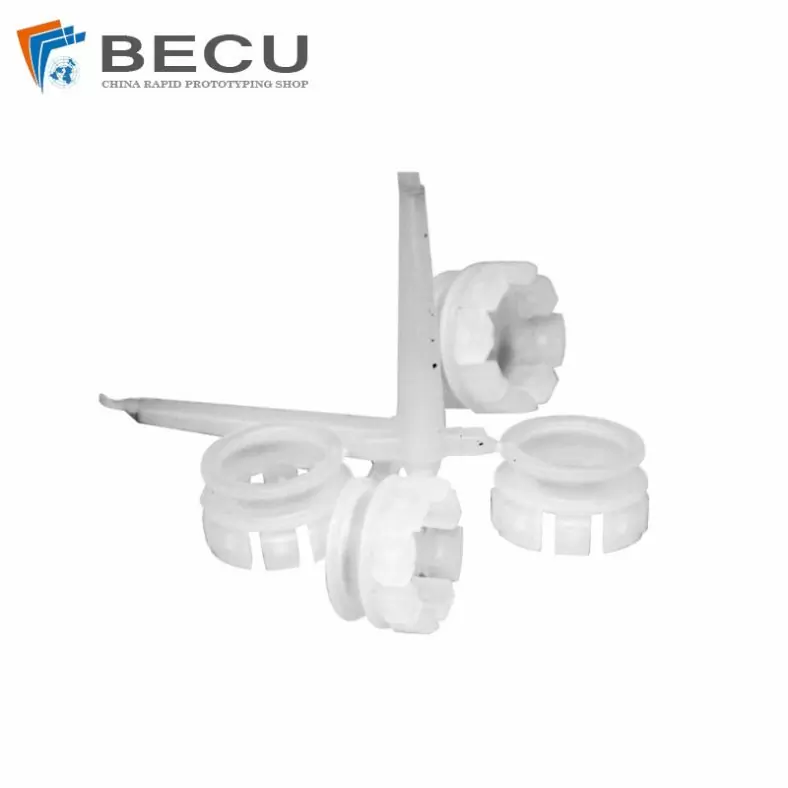
Injection Molding PE-UHMW Retaining Buckle And Ring
-
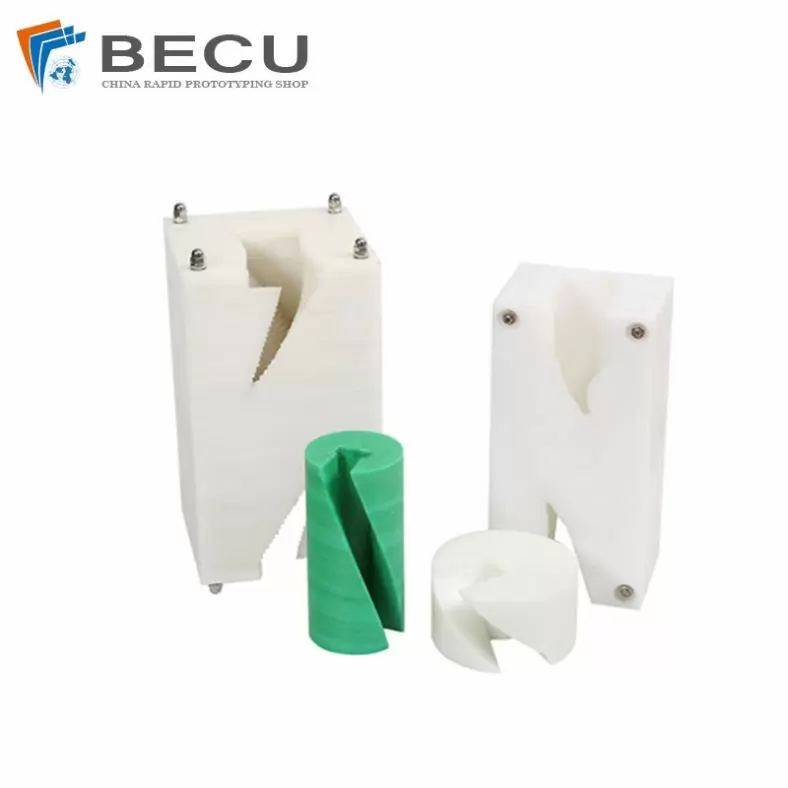
Cnc Machined UHMW-PE Bottle Turner
-
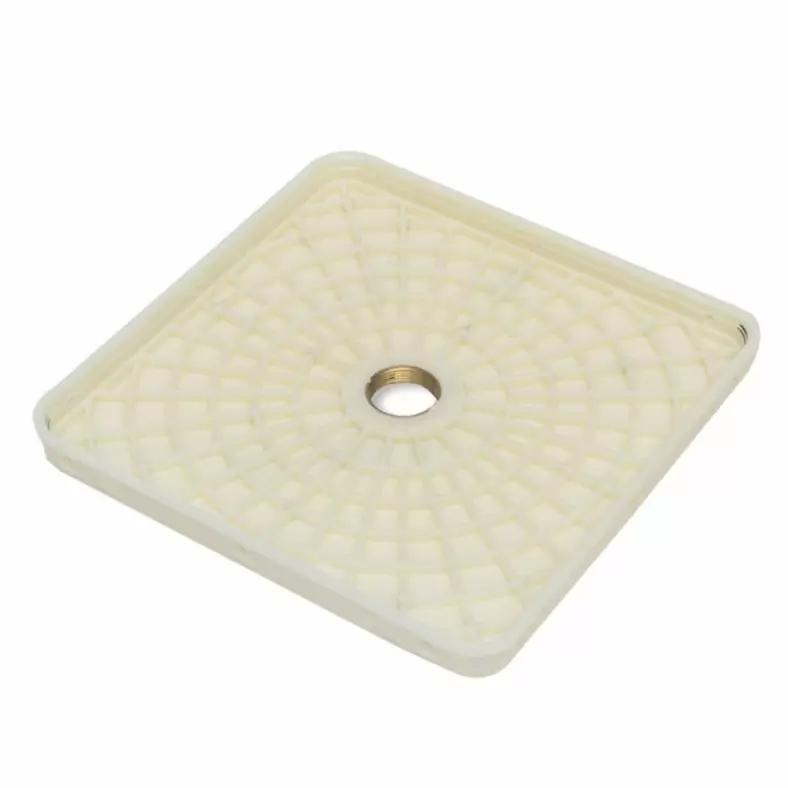
Shower Inclosure Sleeve By Plastic Injection
-
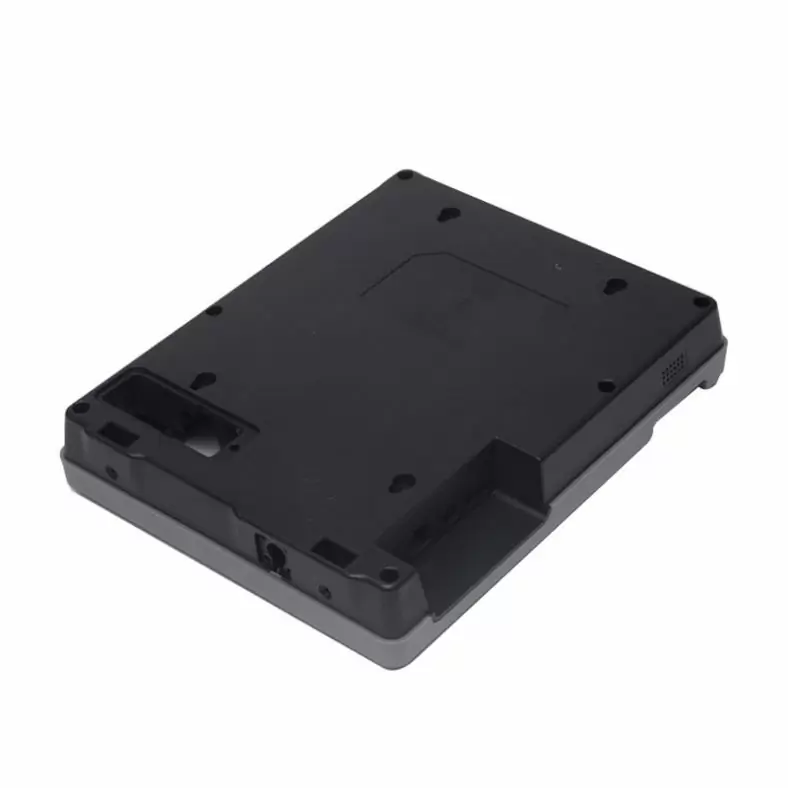
Injection Secret Security Machine Control Shell
-

Sewing Machine Industrial Control Shell By Plastic Injection
9.1. Real-World Examples of Avoiding Costly Mistakes
Case Study 1: Reducing Defects Through Advanced Process Monitoring
Problem: A plastics manufacturing company was experiencing a high rate of defects in their injection-molded automotive parts, leading to increased scrap and customer complaints.
Solution: The company implemented an advanced process monitoring system that continuously collected data on key parameters like temperature, pressure, and cycle time. Real-time alerts were set up to notify operators of deviations from optimal conditions.
Outcome: By addressing issues promptly and adjusting process parameters in real-time, the company reduced defects by 30%, resulting in significant cost savings, improved customer satisfaction, and reduced waste.
Case Study 2: Sustainable Materials Implementation
Problem: A consumer goods manufacturer faced growing pressure to reduce their environmental footprint and adopt sustainable practices.
Solution: The company transitioned to using eco-friendly materials, including biodegradable and post-consumer recycled plastics, for their injection-molded products. They also introduced closed-loop recycling systems within their facilities to reduce material waste.
Outcome: This commitment to sustainability not only enhanced the company’s reputation but also led to long-term cost savings through reduced material consumption and waste disposal expenses.
9.2. How Companies Improved Their Injection Molding Processes
Case Study 3: Lean Manufacturing Implementation
Problem: An injection molding facility was experiencing high production costs due to long cycle times and excessive material waste.
Solution: The company adopted lean manufacturing principles to streamline their processes. They optimized machine settings, reduced setup times, and implemented just-in-time inventory management to minimize waste.
Outcome: These improvements led to a 20% reduction in production costs, improved overall efficiency, and a more competitive position in the market.
Case Study 4: Collaborative Problem Solving
Problem: A medical device manufacturer was struggling with recurring defects in their injection-molded components, leading to costly recalls.
Solution: The company formed a cross-functional team involving operators, engineers, and mold experts to conduct a root cause analysis. They used scientific molding techniques to optimize process parameters and improve mold design.
Outcome: By addressing the root causes of defects, the company achieved a defect reduction of 80%. This not only prevented costly recalls but also enhanced product quality and customer trust.
These case studies illustrate that companies can overcome challenges and avoid costly mistakes through innovative solutions, data-driven decision-making, and a commitment to sustainability. By continuously improving their injection molding processes, these companies achieved cost savings, enhanced product quality, and positioned themselves for long-term success in their respective industries.
In Conclusion
Plastic injection molding is a versatile and efficient manufacturing process, but it comes with its share of challenges and potential costly mistakes. Preventing these mistakes requires a holistic approach that encompasses various aspects of the injection molding process.
Starting with a solid foundation in the basics of plastic injection molding, including understanding the process, materials, and key machine components, lays the groundwork for success. Pre-production planning is essential, involving careful consideration of design, material selection, mold design, prototype testing, and setting realistic expectations.
Optimal machine setup is crucial, focusing on temperature control, pressure regulation, injection speed, cooling, and maintenance to ensure consistent and efficient production. Quality control measures, such as statistical process control, in-process monitoring, inspection, documentation, and root cause analysis, help maintain product quality and prevent costly defects.
Operator training and skill development are integral to ensuring safe, efficient, and error-free production. Well-trained operators contribute to precision, consistency, and continuous improvement within the manufacturing process.
Troubleshooting and problem-solving play a vital role in addressing issues as they arise. From common molding problems to advanced troubleshooting techniques, a proactive approach to identifying and resolving issues is essential. Collaboration with suppliers and industry experts can provide valuable insights and support in troubleshooting efforts.
Lastly, sustainability and environmental considerations are increasingly important in today’s manufacturing landscape. Using eco-friendly materials, optimizing energy efficiency, and reducing waste through recycling and responsible disposal not only align with environmental goals but can also lead to cost savings.
Incorporating these strategies and best practices across all stages of the plastic injection molding process will help prevent costly mistakes, enhance product quality, and improve the overall efficiency and sustainability of your manufacturing operation. By prioritizing these principles, companies can stay competitive, reduce waste, and meet the growing demand for sustainable and high-quality products in the market.
